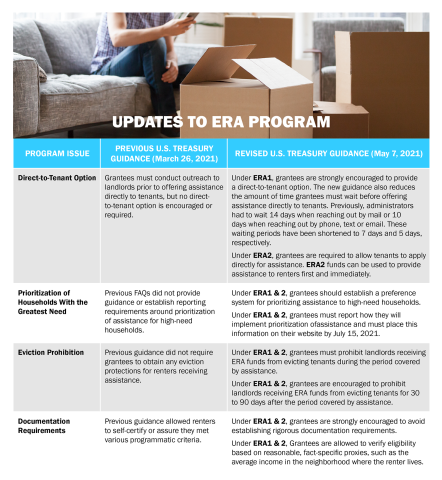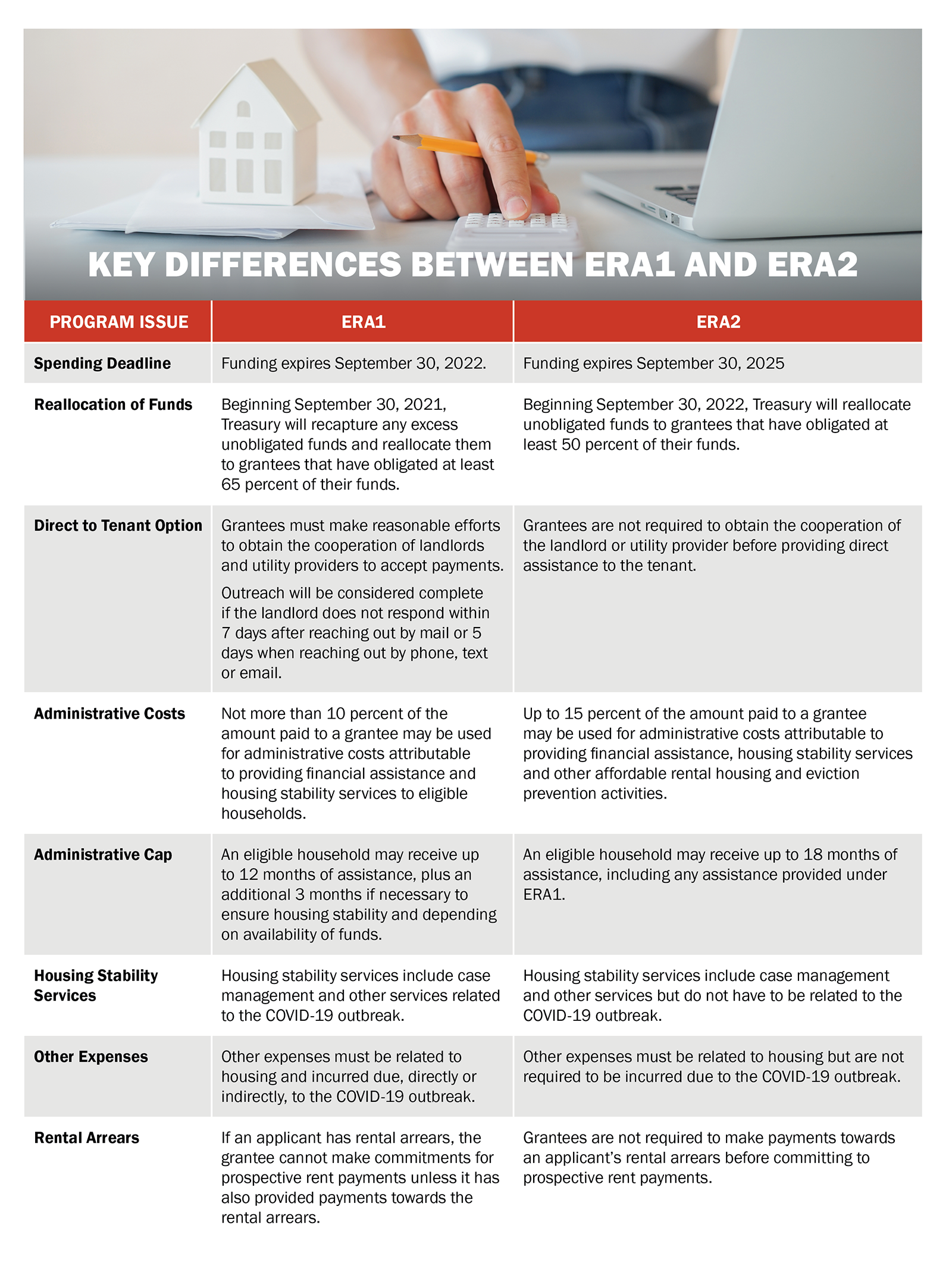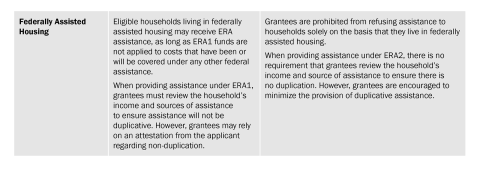NACo Analysis of Federal Emergency Rental Assistance Program 1 and 2
Upcoming Events
Related News
The Consolidated Appropriations Act of 2021, enacted in December 2020, established and provided $25 billion for the federal Emergency Rental Assistance (ERA) program. The program, which is administered by the U.S. Treasury Department, provides direct payments to states and eligible units of local governments, including counties with populations over 200,000, to assist individuals and families struggling to make rental and utility payments due to the COVID-19 pandemic. Counties with populations below 200,000 may receive funding through their state.
Treasury has now fully distributed this first round of funding for the program, referred to as ERA1. Counties across the country have now set up their own emergency rental assistance programs, using ERA1 dollars, to help keep their residents stably housed through the COVID-19 pandemic and beyond.
The American Rescue Plan Act (ARPA), enacted in March 2021, provided $21.6 billion for a second round of the ERA program, known as ERA2. On May 7, the Biden administration announced the allocation of this ERA2 funding, including $2.5 billion in targeted assistance to the highest need areas. As of May 25, the administration has distributed $6.1 billion of the total ERA2 funding.
Alongside the ERA2 allocations, the U.S. Treasury Department released updated Frequently Asked Questions (FAQs) for the federal Emergency Rental Assistance (ERA) program as a whole. This new guidance provides further clarity into the program, outlines the differences between ERA1 (the first round of the program, established under the Consolidated Appropriations Act of 2021) and ERA2 and offers enhanced flexibilities for local government grantees. To view the FAQs, click here.
The tables below outline important changes to the ERA program as well as differences between ERA1 and ERA2. For more information, resources and updates on the program please be sure to view NACo’s ERA Resource Hub. Additionally, if you are a county official who would like your ERA program added to our online list of county emergency rental assistance programs, please email ERAP@naco.org.



